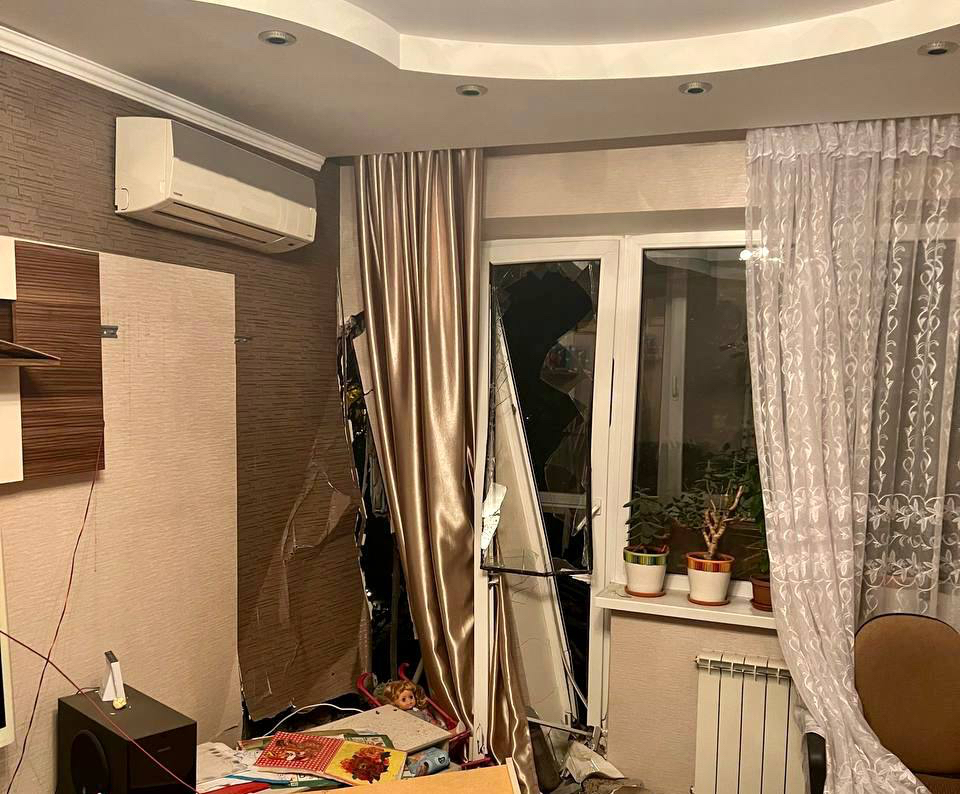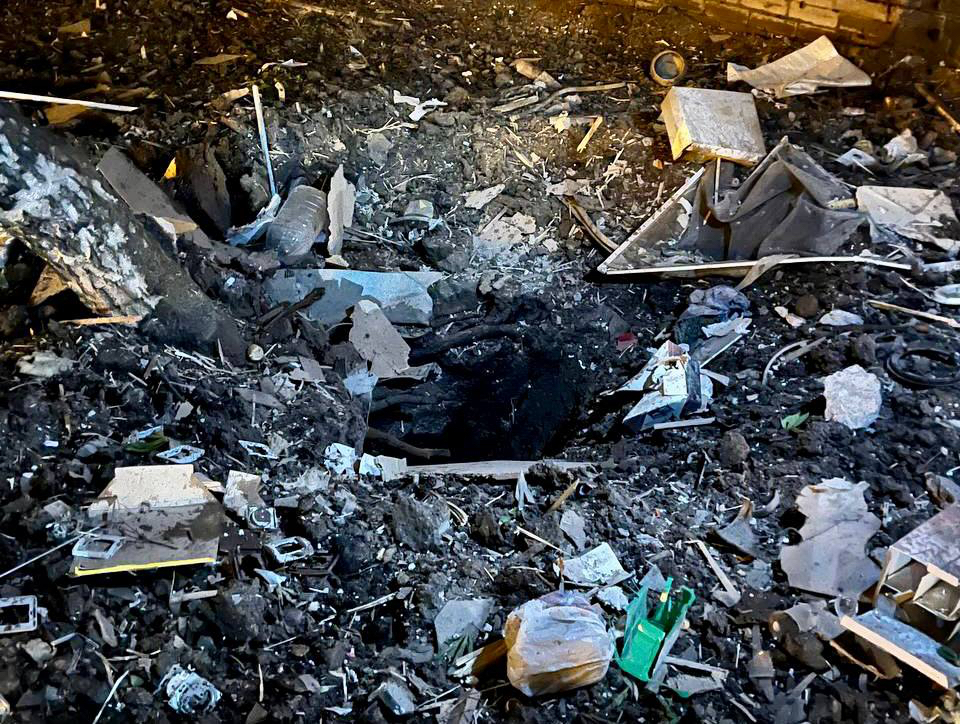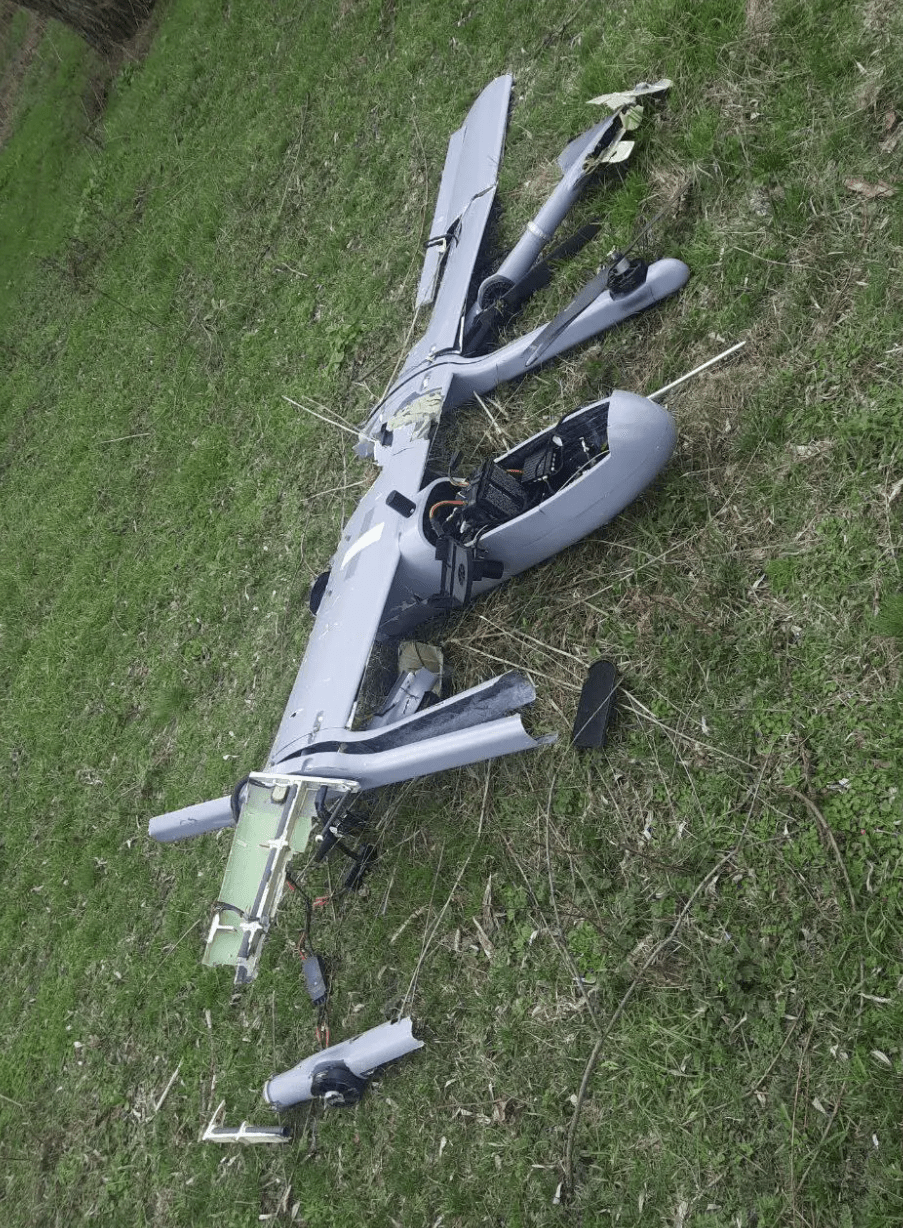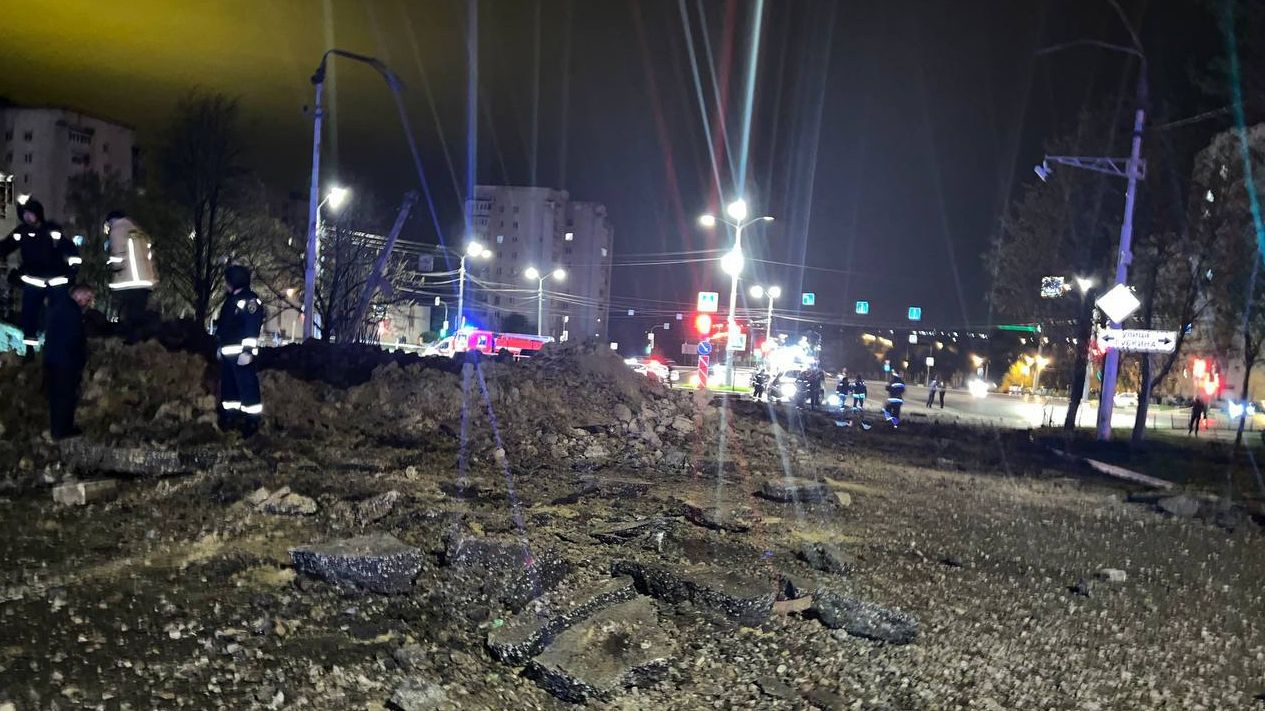A Russian Su-34 Fullback strike fighter accidentally dropped a bomb or other type of offensive weapon on the Russian city of Belgorod, not far from the Ukrainian border, in the first incident of its kind that we are aware of in this conflict. The weapon caused an explosion and damaged several buildings, although it remains unclear exactly what went wrong.

“As a Sukhoi Su-34 air force plane was flying over the city of Belgorod there was an accidental discharge of aviation ammunition,” the Russian Ministry of Defense confirmed, in a statement reported by the state-run TASS news agency.
The incident occurred late on Thursday. Local authorities confirmed a large blast in the city of Belgorod, which is the administrative center of the region of the same name and is located roughly 25 miles north of the border with Ukraine.



Belgorod’s regional governor, Vyacheslav Gladkov, said three people had been injured. “Thank God there are no dead,” Gladkov added in a statement on Telegram.
Gladkov also said that the weapon (only a single example has been mentioned by officials) left a crater measuring 65 feet across on one of the city’s main streets. Further damage was inflicted on four apartment buildings (at least one of which was evacuated overnight) and four cars.
Videos posted to social media show damaged cars and piles of rubble in the street, as well as a building with its windows blown out. One vehicle appears to have been thrown onto the roof of a building by the blast.
Bearing all this in mind, it seems extraordinary that the casualty toll was so low, although it may still rise.
The Russian Ministry of Defense confirmed that an investigation into the incident is now underway.
The Su-34 has been one of the most extensively used fixed-wing combat aircraft in the Kremlin’s war in Ukraine. This aircraft is among the more modern and capable available to the Russian Aerospace Forces, with a host of unique features, which you can read more about here. At the same time, its heavy use has come at a cost, with open-source intelligence confirming at least 19 examples destroyed by a combination of enemy action and non-combat-related accidents since the full-scale invasion began.

The defense ministry has not revealed what type of weapon was involved. Although the Su-34 can carry a very wide range of guided and unguided munitions, some of them offering significant standoff range, the aircraft has frequently been noted carrying ‘dumb’ ordnance on many of its sorties in the Ukraine war. This speaks to both the rigidity of Russian tactics as well as the limited stocks of more advanced (and expensive) precision-guided munitions.

Looking at available videos of the impact of the weapon and subsequent explosion suggests that it was fitted with a fuze with a delay of around 15 seconds, suggesting a bomb of some kind. The overall size of the explosion is consistent with a smaller bomb, or perhaps a larger weapon that failed to detonate properly.
It’s been pointed out that the delay fuze would be consistent with the BETAB series of concrete-piercing bombs, designed to defeat airfield runways and similar targets. Again, this can’t be determined with any real accuracy and it’s similarly possible that whatever weapon was involved only partially detonated anyway.
As to why the Su-34 released the weapon over a heavily populated part of Russia remains a mystery for now.
One possibility is a simple pilot error or some kind of technical malfunction that led to it falling away from its pylon. A problem with the jet could also lead to the crew deciding to jettison weapons for their own safety, but then more than one would likely drop and they would be expected to hit the ground without detonating at all. Electing to do this over a city would also be highly unusual and there is currently no sign that the jet had anything wrong with it.
Another potential scenario involves an abortive attempt to launch some kind of glide weapon, essentially a wing kit bolted to a freefall bomb, providing it with a degree of standoff range. In this way, it would be possible for a winged bomb to hit a target in Ukraine even if released from over Russian territory, especially so close to the border. This would imply that something went wrong with the weapon immediately after (a planned) launch. The question of whether such a method of delivery is in any way safe (bearing in mind the city below) remains, however, with even an overflight of a major population center by a bombed-up aircraft posing a degree of hazard.
It’s no secret that Russia’s dwindling stockpile of purpose-designed standoff air-launched weapons has led to an apparent crash program to field ad-hoc glide bombs — essentially existing, Soviet-era ‘dumb’ bombs fitted with wing kits.
In January, a photo appeared of what appeared to be a 500-kilogram (1,102-pound) FAB-500M-62 bomb with a pop-out wing kit attached. The weapon was loaded onto a Russian Su-34. At that time, it was unclear if the bomb was guided or not. Wings alone would enable longer-range strikes but with a high degree of inaccuracy. Unguided, the weapons could still be used against very broad area targets, such as Ukrainian cities.

The U.S.-made Joint Direct Attack Munition, or roughly half the weight of a FAB-500, can hit targets up to 40 miles away when fitted with a wing kit. However, accounts of an apparent earlier modification of the FAB-500M-62 with an unfolding wing of its own suggest it can offer a range of only 3.7-4.3 miles, albeit when dropped from low altitude. That would clearly not fit with a launch from above Belgorod, even if such a mode of delivery were authorized.
Since the appearance of that bomb, however, there have been consistent reports of Russia using guided glide bombs, a threat that Ukrainian air defenses have been struggling with, in particular, according to officials in Kyiv. Last month, Ukrainian Air Force spokesperson Yuriy Ignat described guided glide bombs as a “new threat,” with up to 20 being used each day by Russian forces. “This is a threat to us, and we have to urgently respond to it,” Ignat told Ukrainian television, calling for additional and new ground-based air defense systems, including the U.S.-made Patriot that’s since started to arrive in Ukraine. Ignat noted that Su-34s and Su-35s were being used to deliver these bombs.
What’s unclear is how the guidance package works and if it, like the adapted FAB-500M-62, is based on a stock bomb body, or if reference is actually being made to new types of purpose-designed standoff weapons, like the Grom, or even an existing guided bomb, like one of the UPAB series. That last weapon, however, has also been used earlier in the conflict, which would seem to rule it out as being a “new threat.”
The Grom is an air-to-surface weapon with a pair of pop-out wings, and it comes in powered and unpowered forms and with a range of guidance options. The first Grom wreckage appeared in Ukraine in April although there is little to suggest, so far, that it’s being used in widespread use, with few existing photos or documented accounts other than this one. Again, a weapon like the Grom being accidentally released and then detonating partially, or a planned release of such a weapon that then malfunctioned, could be possible causes of the Belgorod blast. At this stage, we simply don’t know for sure.
This is not the first time that the border region of Belgorod has been hit by explosions related to the war in Ukraine, although previous incidents have generally involved apparent attacks by Ukrainian forces and/or saboteurs, as part of an apparent wider strategy that we have discussed in the past.
Since the beginning of the full-scale invasion, there have been multiple reports from the Russian side of Ukrainian artillery and rocket attacks on the region, as well as sporadic attacks involving Tochka (SS-21 Scarab) short-range ballistic missiles. Meanwhile, a string of mysterious explosions began to rock Belgorod, including at oil infrastructure sites and ammunition depots. Official Russian accounts of these incidents have often provided little in the way of detail, while Ukrainian officials refrain from commenting directly on possible operations outside their borders.
In April last year, a fuel depot in Belgorod was the apparent target of a cross-border raid by a pair of Ukrainian Mi-24 Hind attack helicopters, as we reported at the time. Ukraine denied involvement.
For almost a year, Ukraine has employed drones to attack targets in Belgorod. Last month, there were reports of drone strikes against oil infrastructure and of Russian ground-based air defenses being increasingly active to shoot down the unmanned aerial vehicles involved. These were accompanied by photos released by Russian officials showing the wreckage of Ukrainian drones.

As for incidents involving the accidental release of munitions by Russian aircraft over their own territory, none of these appear to have been documented in the past. However, Russia’s fast-jet force has certainly been hit by some costly non-combat-related mishaps since the war began, likely the result of pilot error or mechanical failure.
In another major incident involving a Su-34, one of the strike fighters slammed into a residential building in the city of Yeysk, a coastal town situated directly across the Sea of Azov from the Russian-occupied Ukrainian city of Mariupol. According to the Russian Ministry of Defense, the jet in question was climbing out of Yeysk Air Base for a training flight when it crashed. The two crewmembers are said to have ejected safely. Yeysk has also been a major forward operating base for sorties over Ukraine.
In his statement on last night’s incident, Belgorod’s regional governor, Vyacheslav Gladkov, described it as a “severe test that fell upon the residents of Belgorod,” but that “Together, I think we will pass these tests.”
With fighting continuing to rage over the border, just 20 miles away from the city, it’s very likely that Belgorod and the surrounding region will continue to feel the effects of the conflict, both direct and otherwise.
In the meantime, we will follow this story and hope to learn exactly what went so badly wrong that a Russian strike fighter bombed one of its own cities.
Contact the author: thomas@thedrive.com
